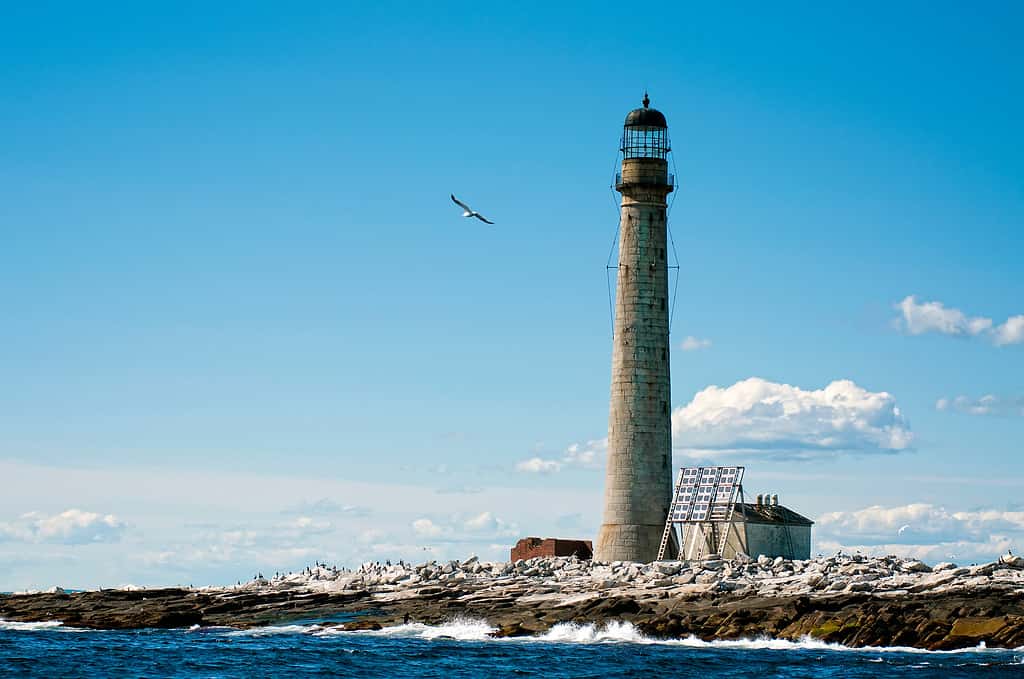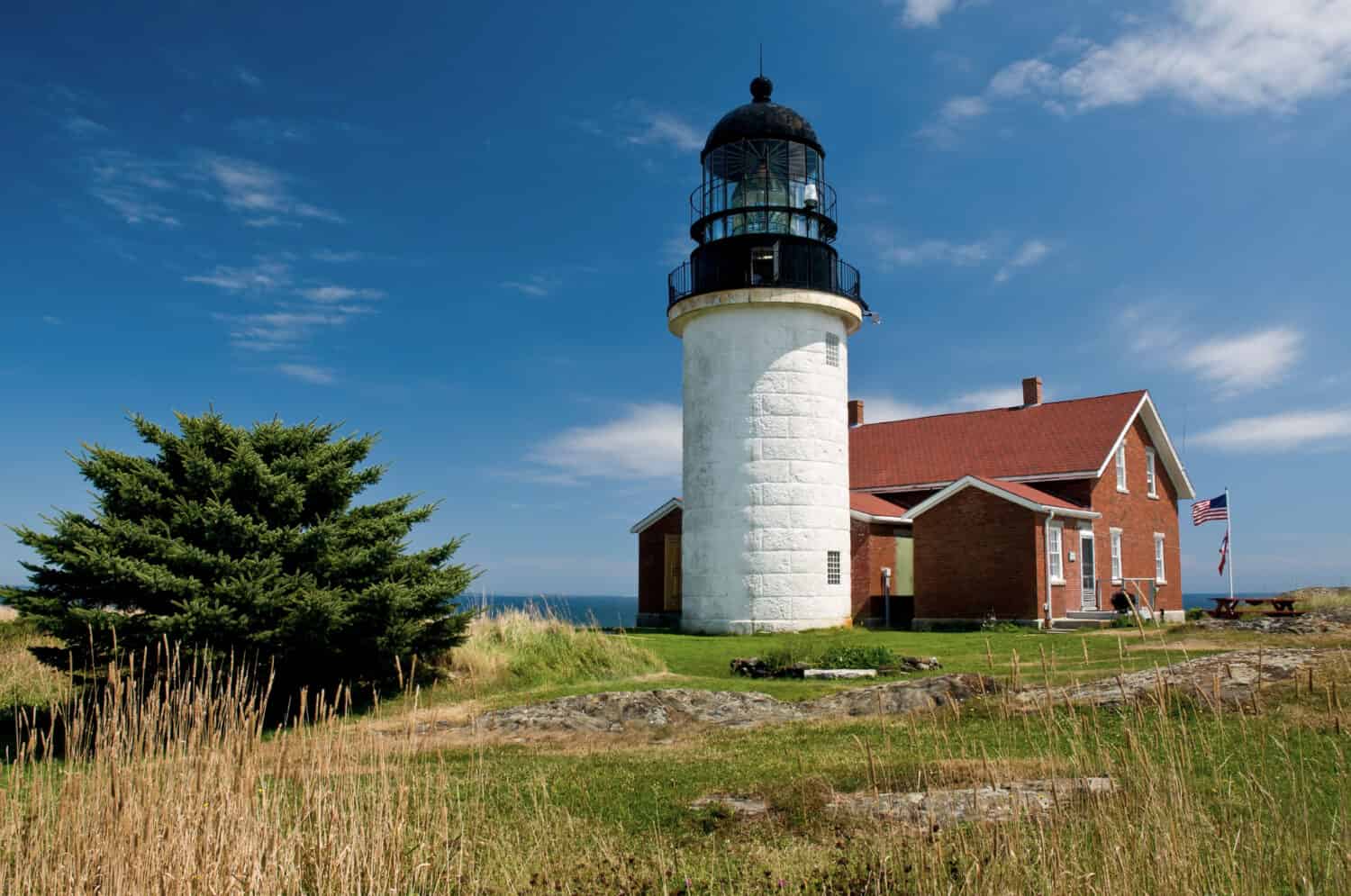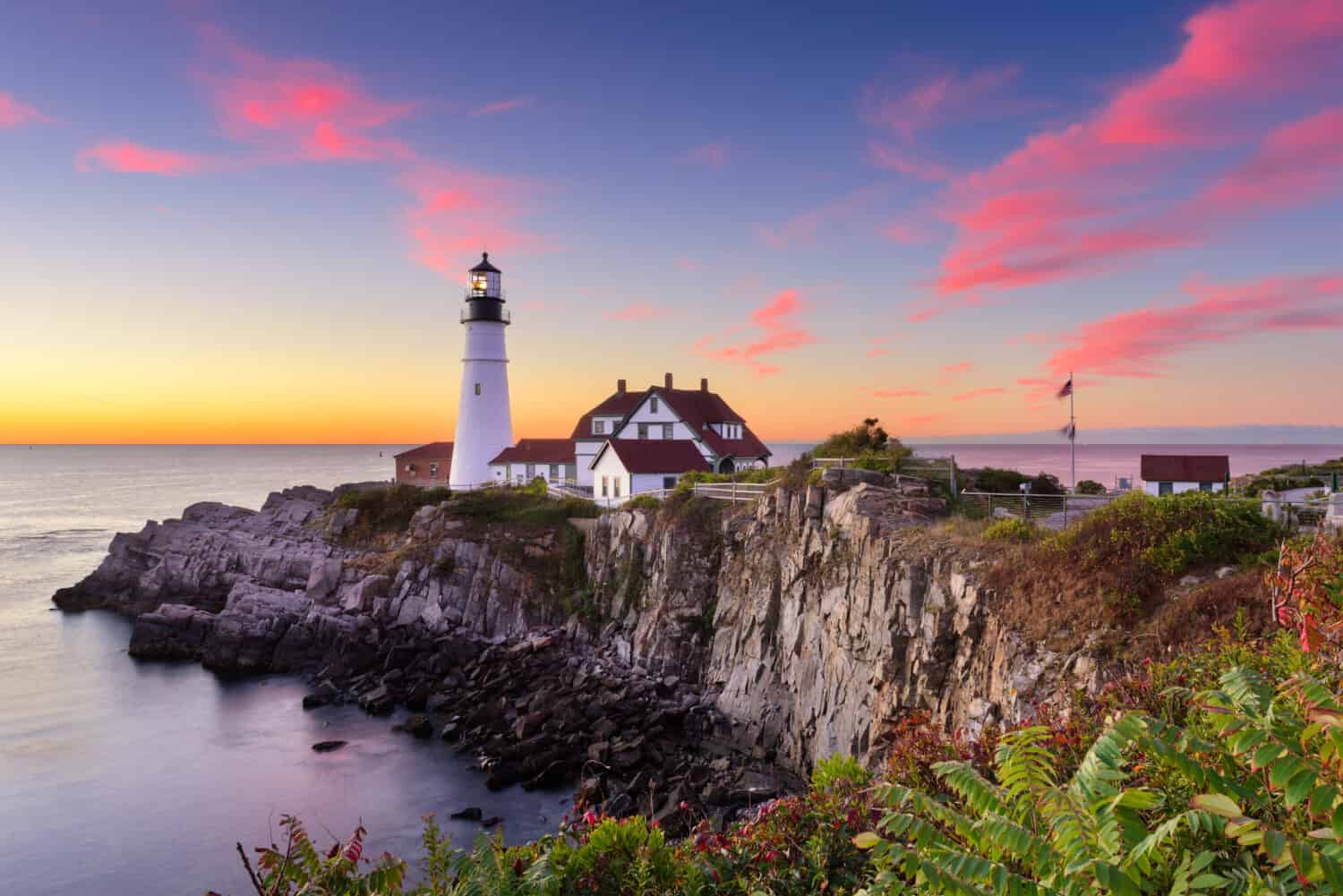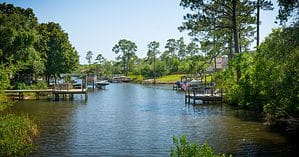Maine’s rocky coastline and charming lighthouses are famous tourist attractions. They draw countless visitors with their unique blend of natural beauty and historical significance. Among these stunning structures, one stands out for its sheer stature. The tallest lighthouse in Maine is Boon Island Light, which stands at 133 feet tall. Nestled on a barren rock pile off the coast of York, ME, this towering beacon is a testament to human ingenuity and resilience, embodying the state’s rich maritime heritage.

Boon Island Light is a navigational beacon for sailors on the southern Maine coast.
©Allan Wood Photography/Shutterstock.com
Where the Towering Beacon Stands
Boon Island Light is a lighthouse on a rocky terrain near York, ME. It is a navigational beacon for sailors near Cape Neddick on the southern Maine coast. Though not open to the public, you can admire this magnificent lighthouse from Sohier Park in York Beach or on a local lighthouse cruise.
Wildlife Around Boon Island Light

Near Boon Island Light, you may see Atlantic puffins.
©Giedriius/Shutterstock.com
The area surrounding Boon Island Light is a haven for maritime navigators. It’s also a sanctuary for a diverse range of wildlife. The waters around the lighthouse teem with marine life. Various species of fish and shellfish inhabit the surrounding waters. This means there are bountiful food sources for the many species of birds in the area.
The Atlantic puffin can be observed nearby with its colorful beak and unique appearance. The lighthouse acts as a beacon for various species of migratory birds. It provides them with a point of navigation during their long journeys.
The island supports a limited but tough collection of plants and animals on its land. Despite the difficult environment of the rocky base of the lighthouse, there is evidence of a thriving ecosystem. By taking a closer look, you can observe sturdy grasses, lichens, insects, small birds, and sometimes rabbits or foxes. However, it requires patience and attentiveness to spot them.
The Legacy of Boon Island Light: A Deep Dive into History
Constructed in 1811, Boon Island Light has withstood the test of time. It stands as a testament to the resilience of human endeavor against the forces of nature. Over the years, it has been a silent witness to countless tales of the sea, from the mundane to the extraordinary.
The Early Days
The construction of Boon Island Light was no small feat. In the early 19th century, constructing a lighthouse on a barren rock pile in the middle of the Atlantic Ocean presented numerous challenges. The unforgiving weather and the absence of solid ground made the construction process difficult and dangerous. Despite these challenges, skilled workers erected a 50-foot stone tower, the first iteration of Boon Island Light.
The need for a taller lighthouse became apparent as maritime traffic increased along the Maine coast. In 1855, the current tower, standing at 133 feet, was constructed to provide better guidance to ships navigating the treacherous waters of the Atlantic.
Survival and Tragedy
Boon Island Light has witnessed numerous chronicles of survival and tragedy. One notable incident occurred in 1710 when the Nottingham Galley shipwrecked on Boon Island. The crew survived for three weeks in the harsh winter conditions, resorting to cannibalism for survival. This tragic event highlighted the need for a lighthouse on the island to guide ships and prevent such disasters.
In 1978, another significant event marked the lighthouse’s history. A massive storm cut off the island’s power supply, leaving the lighthouse keeper stranded without heat or light for ten days. The Coast Guard eventually rescued the keeper. This incident marked the end of manned operations at Boon Island Light. Since then, the lighthouse has been automated.
Boon Island Light Today
Boon Island Light is an automated lighthouse that helps sailors navigate the waters along Maine’s coast. Although it endures difficult conditions, the lighthouse remains sturdy, demonstrating excellent construction and maintenance work.
Boon Island Light has a strong connection with Maine’s coastal history. It has protected many sailors from the dangers of the sea. Its tales still interest those who appreciate Maine’s maritime past. Even after 200 years, the lighthouse stands tall as a remarkable feat of human resilience against the elements.

Seguin Island Light has its own memories of shipwrecks and is a heroic lighthouse.
©Allan Wood Photography/Shutterstock.com
Are There Other Lighthouses in Maine?
Indeed, Maine is home to over sixty lighthouses, each with a unique story and charm. From the iconic Portland Head Light, one of the most photographed lighthouses in the country, to the picturesque West Quoddy Head Light, renowned for its candy-striped exterior, Maine’s coastline is rich with these historic structures.
Each lighthouse in Maine has its distinctive charm and purpose. Some, like the Portland Head Light or Pemaquid Point Light, are popular tourist destinations, offering stunning views and rich history. Others, like the remote Matinicus Rock Light or the eerie Seguin Island Light, are less accessible but equally fascinating, each harboring tales of shipwrecks, heroic lighthouse keepers, and life on Maine’s rugged coast.
While these lighthouses vary in height and design, they all share a common purpose: to guide mariners safely through the dangerous waters of the Maine coast. With its impressive height and stoic presence on its barren rock pile, Boon Island Light stands out as the tallest and most awe-inspiring. These lighthouses, including Boon Island Light, contribute to the rich tapestry of Maine’s maritime history. It guides ships past the rocky coastline and captivates those who appreciate their timeless beauty and historical significance.

Portland Head Light is one of the most popular lighthouses in Maine.
©Sean Pavone/Shutterstock.com
Are These 60 Lighthouses in Operation and Open to the Public?
While there are over 60 lighthouses dotting the coastline of Maine, not all of them are in operation, and many are not accessible to the public. The US Coast Guard maintains most of these lighthouses, and several are still actively guiding mariners, thanks to modern automation technology. The lights of these lighthouses continue to shine, a testament to their enduring purpose.
As for public access, while several lighthouses welcome visitors and offer guided tours, others are located on private property or in remote and inaccessible areas. For instance, popular lighthouses like Portland Head Light and Pemaquid Point Light have adjacent museums and are open to the public. They provide fascinating insights into the lives of the lighthouse keepers and the maritime history of Maine.
On the other hand, despite being the tallest lighthouse in Maine, Boon Island Light is not accessible to the public due to its remote location on a barren rock pile. However, its towering structure can be admired from a distance from spots such as a lighthouse cruise.
Not all of Maine’s 60 lighthouses are in operation or open for public exploration. Each contributes to the state’s rich maritime heritage and provides a unique window into the past.
Where is the Boon Island Light Located on a Map?
Boon Island Light stands proudly on the 300-by-700-foot Boon Island, off the southern coast of Maine, near Cape Neddick, and holds the prestigious title of being the tallest lighthouse in both Maine and New England, reaching a height of 133 feet.
here is Boon Island Light on a map:
Conclusion
Boon Island Light shines brightly as a towering masterpiece in the grand tapestry of Maine’s maritime heritage. Its height and robust structure symbolize the enduring spirit of Maine — resilient, steadfast, and magnificent. This lighthouse and numerous others dotting the coastline stand as timeless sentinels, guiding mariners and captivating those who value their historical significance.
While Boon Island Light may not welcome visitors to its rocky outpost, its towering presence can be admired from afar. It reminds Maine of its commitment to maritime safety and preserving its natural heritage.
With its rocky coastline and historic lighthouses, Maine offers an enchanting glimpse into a past where lighthouses were the lifelines of seafarers. The tallest lighthouse in Maine — Boon Island Light — symbolizes the state’s enduring spirit and maritime legacy.
The photo featured at the top of this post is © Allan Wood Photography/Shutterstock.com
Thank you for reading! Have some feedback for us? Contact the AZ Animals editorial team.







